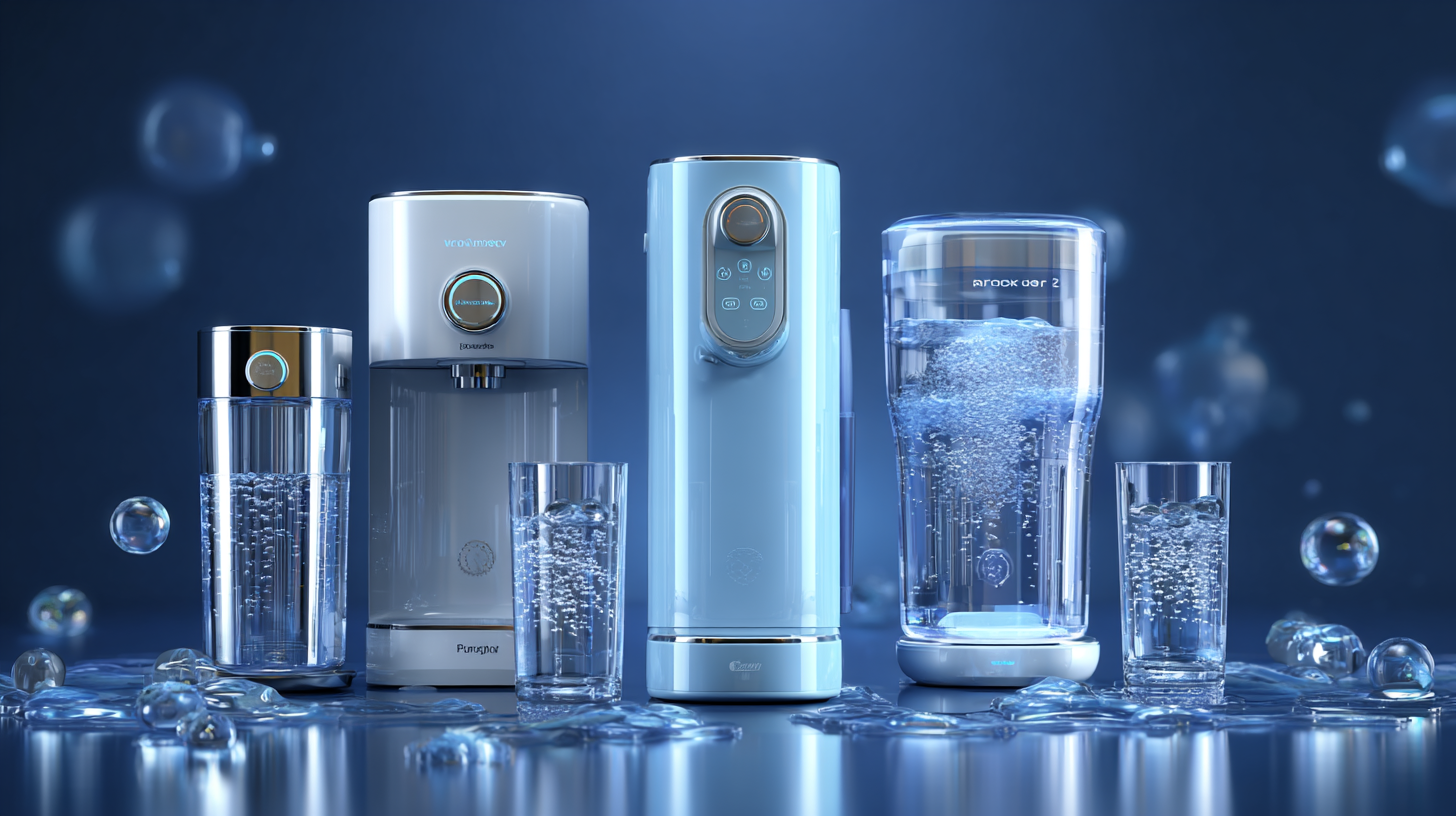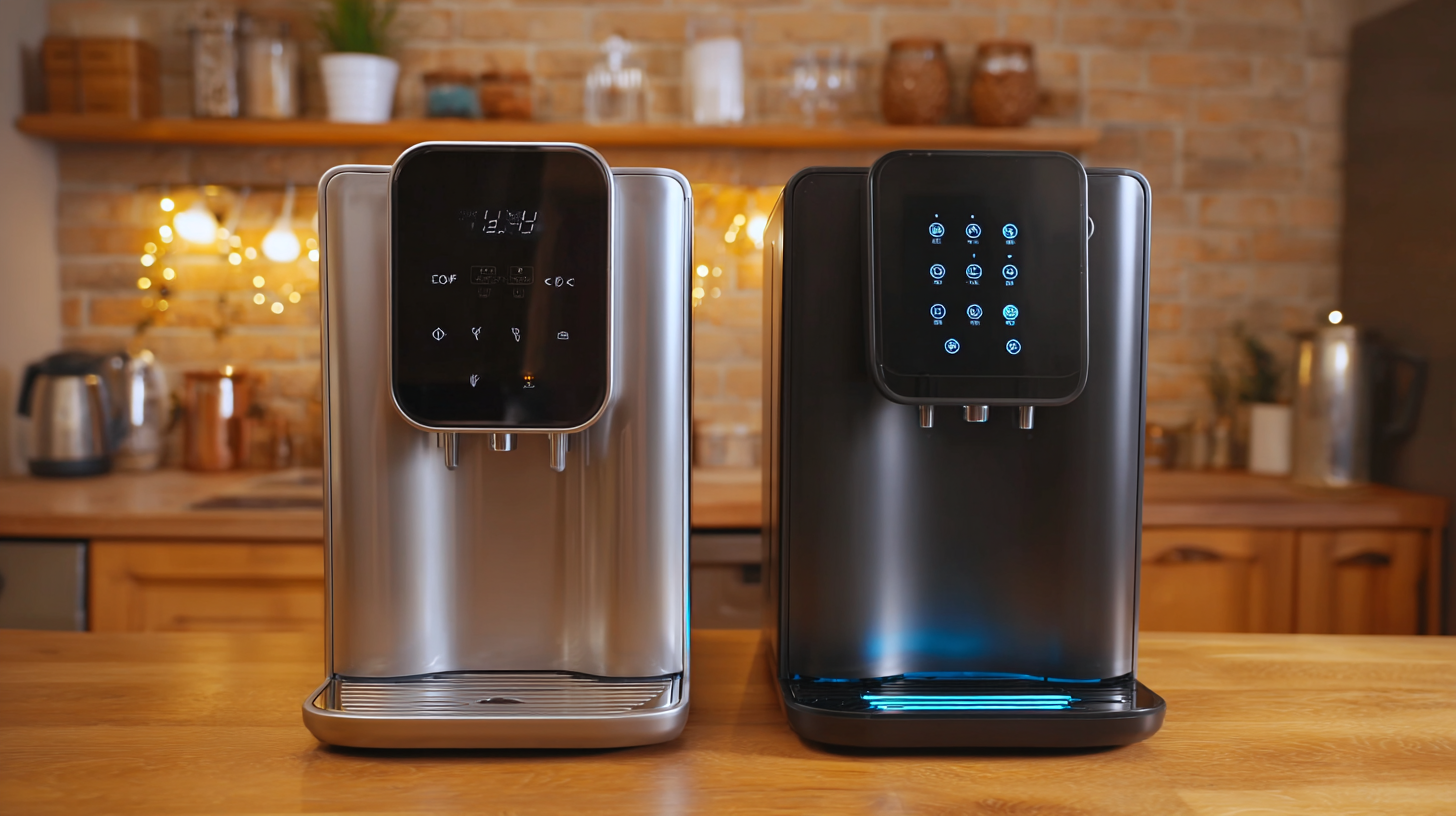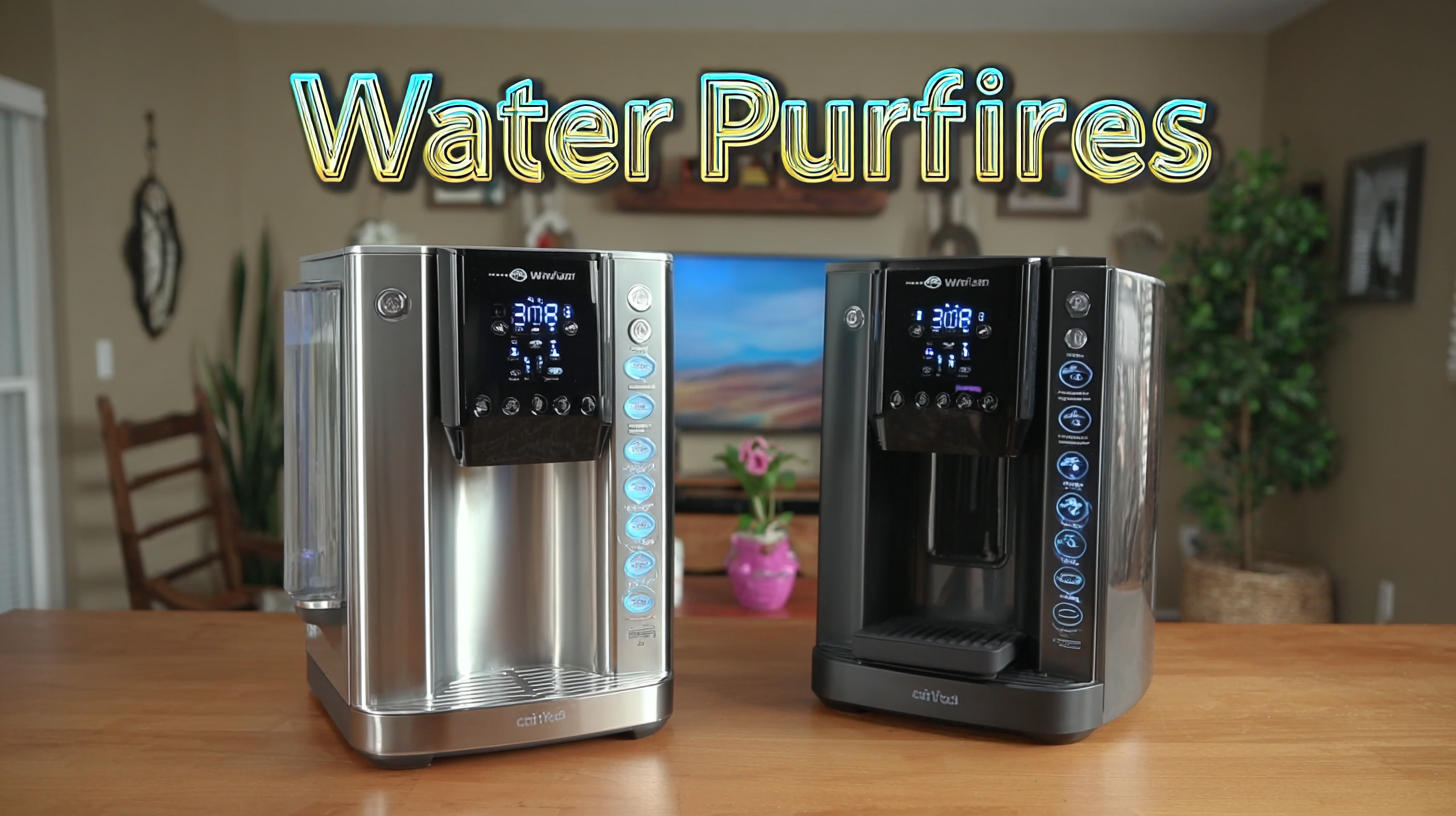
Comparing the Top Water Purifiers for Ultimate Water Quality in 2023
In 2023, ensuring the highest quality of drinking water has never been more critical, as reports indicate that over 2 billion people worldwide lack access to safe drinking water, according to the World Health Organization. As waterborne diseases continue to pose significant health risks—resulting in an estimated 485,000 deaths each year—it is essential to consider effective solutions like Water Purifiers. With a growing concern for contaminants such as heavy metals, microorganisms, and harmful chemicals, consumers are increasingly turning to advanced purification technologies. In fact, the global water purifier market is projected to reach $45.4 billion by 2027, driven by a rising awareness of health issues associated with poor water quality. This blog will explore the top alternatives in water purifiers that offer unparalleled filtration capabilities, helping you make an informed choice for safe and clean drinking water in your home.

Types of Water Purifiers: Which One Suits Your Needs?
When it comes to choosing the right water purifier, understanding the different types available is essential to meet your specific needs. The most common types include activated carbon filters, reverse osmosis systems, and UV purifiers. According to a 2022 report by the Water Quality Association, nearly 30% of U.S. households use activated carbon filters, which are effective in removing chlorine, volatile organic compounds (VOCs), and certain heavy metals, making them suitable for municipal water sources.

Reverse osmosis systems, on the other hand, are often recommended for areas with hard water or high levels of contaminants. The same report indicates that these systems can reduce up to 99% of total dissolved solids (TDS) in water, providing significantly improved taste and safety. However, they can be higher in cost and may waste more water compared to other options.

Lastly, UV purifiers, noted for their ability to eliminate bacteria and viruses, are ideal for those relying on well water or in areas with microbiological concerns. The global UV water purification market is projected to reach $2.84 billion by 2025, illustrating their growing recognition in safe drinking water solutions.
Choosing the right type ultimately hinges on your individual water quality issues and personal preferences.
Key Features to Look for in a Water Purifier
When choosing a water purifier, understanding the key features is essential for ensuring the highest water quality. In 2023, the water purifier market is experiencing significant growth, particularly in Vietnam, where it's projected to expand from $523.2 million in 2024 to $1179.2 million by 2032. As concerns about water safety rise, selecting a purifier that effectively removes contaminants is crucial.

One important feature to look for is the filtration technology employed. Advanced filtration systems, such as reverse osmosis or multi-stage filtration, can effectively eliminate impurities like lead, chlorine, and other harmful chemicals. This is especially relevant in light of recent reports highlighting the exposure of millions to toxic water sources, underscoring the importance of robust filtration systems in safeguarding health.
Another vital aspect to consider is the purifier's maintenance requirements. Opt for a model that offers easy filter replacement and has indicators for when maintenance is due. This not only ensures consistent performance but also encourages regular upkeep, maximizing the purifier's efficiency. As water quality continues to be a pressing issue, investing in a high-quality water purifier with these key features is more critical than ever.
Comparative Analysis: Reverse Osmosis vs. UV vs. Activated Carbon
When evaluating water purifiers for optimal quality in 2023, the choice often narrows down to three leading technologies: Reverse Osmosis (RO), UV purification, and Activated Carbon. Each method has distinct advantages and caters to varying water quality needs. According to the Water Quality Association, approximately 85% of households rely on some form of water filtration, which underscores the importance of selecting the right technology.

Reverse Osmosis is particularly effective for removing dissolved solids, heavy metals, and contaminants that may not be eliminated by other systems, achieving up to 99% purification effectiveness as reported by the Environmental Protection Agency. However, it typically requires more maintenance and can waste water during the filtration process.
On the other hand, UV purification shines in its ability to neutralize bacteria and viruses without adding chemicals; studies indicate it can decommission up to 99.99% of pathogens, making it ideal for microbiologically unsafe water. Activated Carbon filters excel at improving taste and odor by adsorbing organic compounds; however, they may not effectively remove all microbial threats unless combined with other methods.
Ultimately, the best choice depends on specific water quality issues and household needs. Integrating knowledge from industry reports can help consumers make informed decisions, ensuring they achieve the highest water quality with the appropriate technology.
Top 5 Water Purifiers of 2023: Performance and Affordability
In 2023, ensuring access to clean and safe drinking water is more important than ever, and the right water purifier can make all the difference. With numerous options available, it’s essential to find a balance between performance and affordability. Our top five picks for water purifiers this year encapsulate the best features for improving your water quality without breaking the bank.
First on the list is the Aquasana OptimH2O, which combines advanced filtration technology with a reasonable price point. This purifier not only removes chlorine, heavy metals, and harmful contaminants but also retains beneficial minerals. Following closely is the APEC Top Tier, known for its high-quality reverse osmosis system, ensuring that water is purified to the utmost standard. Its cost-effectiveness and durability make it a smart investment for families looking for reliable performance.
Not to be overlooked is the Brita Ultra Max, which offers a sleek design and easy filtration process, managing to stand out in both performance and affordability. Meanwhile, the ZeroWater Pitcher delivers a five-stage filtration system at an accessible price, appealing to those who desire immediate results. Lastly, the Berkey Water Filter is renowned for its gravity-fed design, making it a perfect choice for households aiming for independence from municipal systems. These purifiers not only excel in effectiveness but are also budget-friendly, making them ideal for various lifestyles in 2023.
Comparing the Top Water Purifiers for Ultimate Water Quality in 2023
| Model | Type | Filtration Stages | Contaminants Removed | Flow Rate (GPD) | Price ($) |
|---|---|---|---|---|---|
| Purifier A | Reverse Osmosis | 5 | Lead, Chlorine, Arsenic | 75 | 199 |
| Purifier B | Ultrafiltration | 4 | Bacteria, Viruses | 50 | 149 |
| Purifier C | Activated Carbon | 2 | Chlorine, Sediment | 30 | 89 |
| Purifier D | UV Purifier | 1 | Bacteria, Viruses | 25 | 120 |
| Purifier E | Distillation | 1 | Heavy Metals | 35 | 299 |
How to Maintain Your Water Purifier for Optimal Performance
To ensure your water purifier operates at peak performance, it’s essential to adhere to a rigorous maintenance routine. According to the Water Quality Association, neglecting maintenance can reduce a purifier's effectiveness by up to 50%. Regular checks on filter life are crucial; many models require replacement every 6 to 12 months depending on usage. Implementing a calendar reminder for filter changes can prevent delays and ensure clean water flows consistently.
Additionally, manufacturers recommend frequent cleaning of the purifier system. This involves cleaning the water storage tank and pre-filters, as contaminants can build up over time. A study from the Environmental Protection Agency found that purifiers not properly maintained can harbor bacteria and lead to water quality deterioration. Using a solution of vinegar and water for cleaning is a natural way to eliminate these unwanted pathogens. By following these maintenance tips, you can significantly enhance the lifespan and efficiency of your water purification system, ensuring that you and your family enjoy the highest quality water throughout the year.
